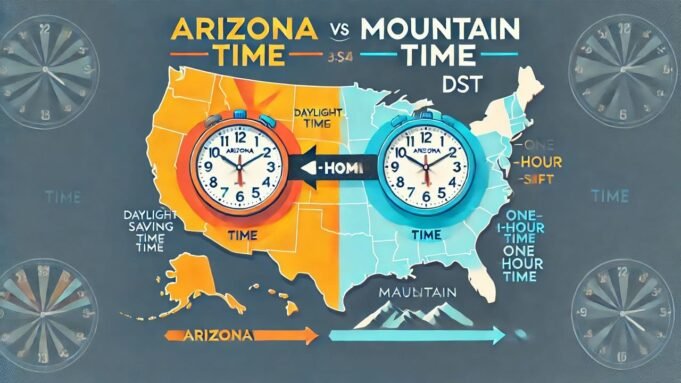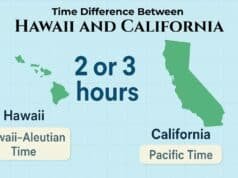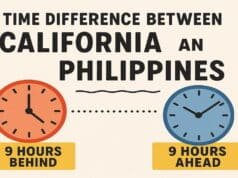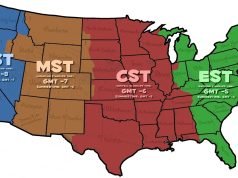Time zones in the United States can be confusing, especially when states like Arizona follow their own rules. Arizona’s time zone practices are unique, often leading to misunderstandings about how its time differs from the Mountain Time Zone.
This article explains the difference between Arizona Time and Mountain Time, highlighting how Arizona handles daylight saving time (DST) differently from most other regions in the U.S.
Table of Contents
ToggleWhat is Mountain Time?
Understanding Mountain Standard Time (MST) and Mountain Daylight Time (MDT)
Mountain Time is one of the time zones observed in the United States and Canada. Like other time zones, it splits into two periods throughout the year—Mountain Standard Time (MST) and Mountain Daylight Time (MDT).
Mountain Standard Time (MST): Observed during the winter months (from early November to mid-March). MST is UTC -7 hours, meaning it is 7 hours behind Coordinated Universal Time (UTC).
Mountain Daylight Time (MDT): Observed during the summer months (from mid-March to early November) when daylight saving time (DST) is in effect. MDT is UTC -6 hours, so it is 6 hours behind UTC.
The Mountain Time Zone encompasses states like Colorado, Montana, New Mexico, Utah, Wyoming, and parts of Idaho. These regions switch from MST to MDT when DST begins in March, then back to MST when DST ends in November.
Arizona’s Unique Time Zone Rules
Why Arizona Doesn’t Observe Daylight Saving Time?
Arizona stands out because it does not observe Daylight Saving Time (DST). In 1968, Arizona lawmakers chose to exempt the state from DST, citing that its hot climate made it unnecessary. They believed extending daylight hours would only make the evenings hotter, increasing energy consumption for air conditioning.
This decision makes Arizona one of the few regions in the United States that stays on Mountain Standard Time (MST) year-round, even during the summer months when other areas shift to daylight time.
Exceptions in Arizona: While most of Arizona does not follow DST, there is an exception for the Navajo Nation, located in the northeastern part of the state. Unlike the surrounding state, the Navajo Nation observes DST, creating pockets where the time differs locally. Interestingly, the nearby Hopi Reservation, which is surrounded by the Navajo Nation, does not observe DST, adding to the complexity.
How does Arizona Time differ from Mountain Time?
Arizona Time vs. Mountain Time in Winter
During the winter months, when DST is not in effect, Arizona aligns with Mountain Standard Time (MST). This means that from November to March, Arizona’s time is identical to that of other states in the Mountain Time Zone that observe MST, such as New Mexico and Colorado.
For instance:
- In January, both Arizona and Colorado are on MST (UTC -7).
Arizona Time vs. Mountain Time in Summer
The real difference arises during the summer months. When most of the Mountain Time Zone shifts to Mountain Daylight Time (MDT), Arizona remains on MST, essentially staying one hour behind.
As a result, from March to November, Arizona is no longer in sync with the Mountain Time Zone. Instead, Arizona’s time matches Pacific Daylight Time (PDT), which is also UTC -7 during DST.
For example:
- In July, Colorado is on MDT (UTC -6), while Arizona remains on MST (UTC -7), aligning with states like California, which observe PDT.
This time shift means that Arizona essentially operates in the Pacific Time Zone during the summer, even though it geographically remains in the Mountain Time Zone.
Impacts of Arizona’s Time Difference
How Arizona’s Time Zone Affects Travel, Business, and Communication?
Arizona’s time zone practices can be tricky for travelers and businesses that operate across time zones. The switch in time alignment during the summer months often causes confusion, especially when people assume Arizona follows the same rules as other Mountain Time states.
- Travelers entering or leaving Arizona during the summer may have to adjust their schedules, as Arizona’s time will differ from nearby states like New Mexico (on MDT) or California (on PDT).
- Businesses coordinating with clients or partners in different time zones must stay mindful of this difference when scheduling meetings or deliveries.
For example, a meeting scheduled with someone in Arizona at 10 AM MST in July would take place at 11 AM MDT for someone in Colorado. Businesses often rely on automated time zone converters or digital calendars that adjust for these time differences.
Common Misunderstandings
Clearing Up Misconceptions About Arizona and Mountain Time
A frequent misconception is that Arizona is always part of the Mountain Time Zone. While this is true geographically, it’s not entirely accurate due to Arizona’s refusal to observe DST. Many assume that Arizona is constantly in sync with other Mountain Time states, but the summer months tell a different story.
Here are a few tips to avoid confusion:
- Always check if it’s summer or winter when planning anything involving Arizona, as the time difference will vary.
- Use digital tools to help manage scheduling and convert time zones accurately.
Conclusion
In summary, the key difference between Arizona Time and Mountain Time lies in daylight saving time practices. Arizona remains on Mountain Standard Time (MST) throughout the year, while most Mountain Time states switch to Mountain Daylight Time (MDT) during the summer. As a result, Arizona aligns with Pacific Daylight Time (PDT) during the summer months, creating a unique time zone arrangement that can confuse travelers and businesses.
When planning across time zones, especially in summer, always double-check Arizona’s time to avoid scheduling mishaps.















